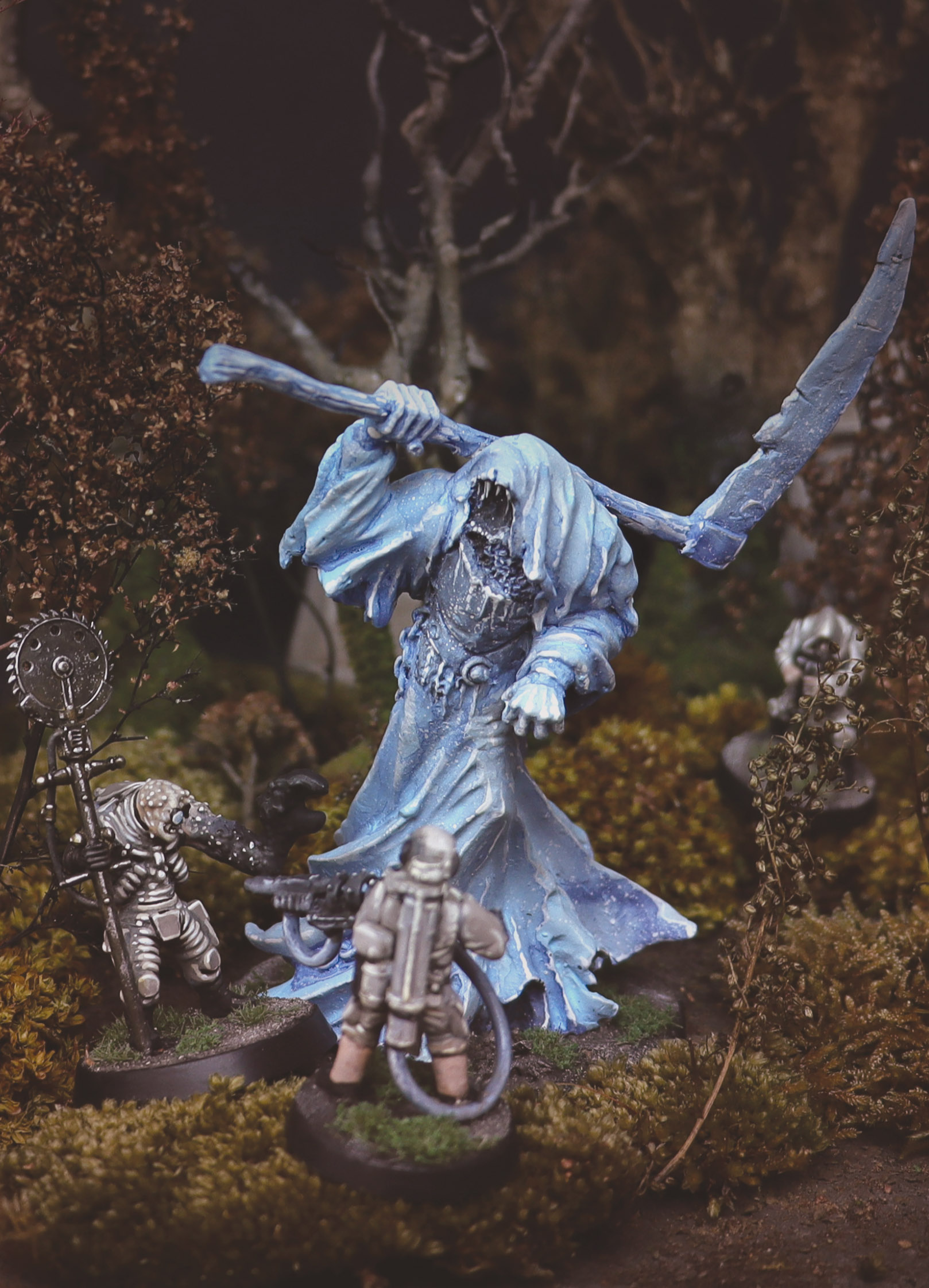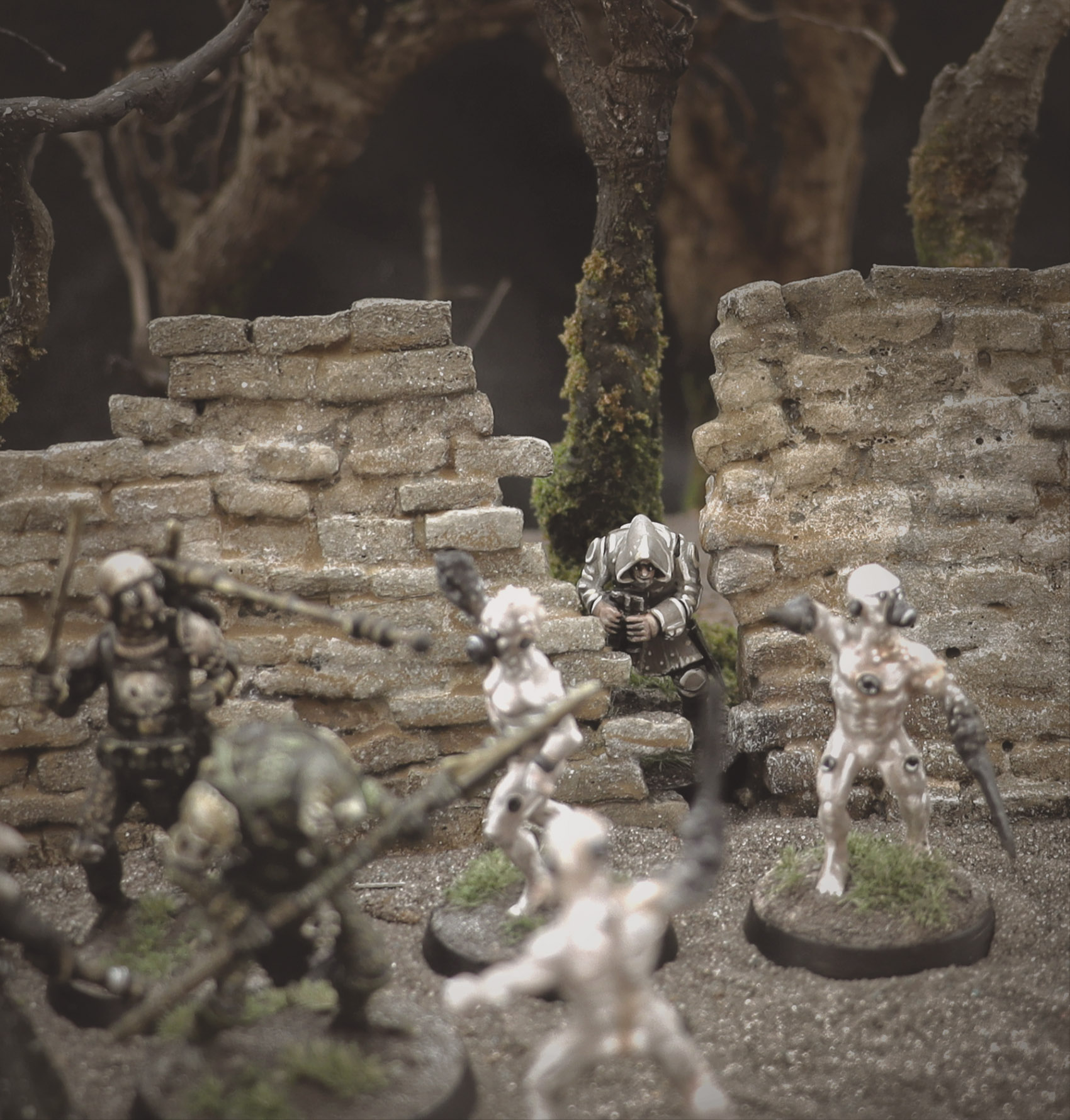
For our second blog on The Doomed, author Chris McDowall talks the mechanics behind his wargame of apocalyptic horror hunting...
Like most of my games, The Doomed has been an experiment in minimalism, but simplicity is only exciting for me if it makes room for something to really shine. With The Doomed, I wanted the starkness of the rules to allow for maximum moments of drama.
Simplicity
In The Doomed your band of 3–8 individuals hunt down Horrors, terrifying monsters likely far beyond your capabilities. Each unit is defined by their Quality, a single attribute determining the score they must equal or beat on a d6 to do just about anything. This includes attacking, resisting harm when you get hit, getting back up when you’re knocked down, and moving extra distance. Your Leader has Quality 3+ while the rest of your band varies between 4+ and 5+.
Specialist members of your warband might be able to reroll a certain type of Quality check or have a special ability or gear that lets them behave differently.
If you get wounded then you’re knocked down, or if you’re already down then you’re taken out of the battle. And it’s in this that the real drama occurs.
Drama
Every great game has those moments you remember: avenging the death of your leader with the very next attack, a misfire sending an explosive into your own troops, or a particularly unlikely headshot sending a wave of panic through the enemy. It’s easy to see how these moments are often associated with more complex systems that use things like hit locations, extensive morale rolls, and detailed weapon simulations.
The Doomed instead compresses these effects into a single table: the Shock Table. Whenever a unit is wounded they roll 2d6 on this table, with results varying from the straightforward (Crawl, letting the target dip into cover or away from their attacker) to the more chaotic (Vengeance, letting one of the target’s Allies return fire at the attacker). These allow even non-deadly attacks to impact the ongoing story of the fight.
So many of the memorable moments from playing The Doomed have come from this table. Throwing opponents off tall towers, heavy weapon specialists panicking and shooting their own leader, and a single innocuous attack leading to a chain reaction of mayhem that totally changes the course of the game.
This only works because that core of the game has been stripped down so thoroughly. With so little in the way of rules to remember or reference you can really dig into those dramatic moments and keep the focus on the board. In particular, there were three lines I drew in the sand to help keep this game simple.
The Three Noes
This mantra sat at the top of my design document: No Measuring, No Stacking, No Tracking.
No measuring means all ranged weapons can fire the length of the board, and units can move any amount of distance in an uninterrupted straight line. This works in the context of a small board dense with scenery, and while it can bring a complexity of its own it allows the positioning element of the game to be firmly focused on line of sight. It’s not important whether you’re 3” or 6” away from your warband leader, it only matters if you can see them. Finding a defendable position isn’t about managing effective ranges, but considering possible routes of approach, and maybe ensuring you have a clear escape route for yourself.
No stacking means that every roll in the game is only numerically modified by a single factor. Shooting attacks gets -1 if the target is in cover, melee attacks get +1 if the target is knocked down, extra movement gets +1 if you can see your leader, and recovering from being knocked down gets +1 if you have an ally next to you. That’s every plus or minus modifier in the game. Again, this is designed to minimise the time spent looking at the rulebook so that the focus stays on the action happening at the table.
No tracking comes from a pet peeve of mine. I can’t abide seeing a beautifully landscaped table, adorned with lovingly painted miniatures, despoiled by cardboard tokens saying things like “pinned” or “poisoned” and the dreaded red die acting as wound counter. Of course, creative modellers can make tokens that blend in but I wanted to make a game that just didn’t require tracking at all. When a unit is downed, you lay the model down on its side, and you’ll need some way of keeping track of which units have activated this round. Other than that, any effects that occur in the game resolve themselves immediately, keeping the game moving forward and, more importantly, the battlefield clear.
All this means you can focus on where your warband are, where the enemy are, and exactly just how doomed you are at any given moment.
Next Thursday, 27th July, out last blog for the The Doomed is all about modelling & kitbashing...
The Doomed is out 3rd August UK and 8th August US. Pre-order now.
Art by Helge C. Balzer. Miniatures modelled, painted & photographed by Ana Polanšćak.





Comments
You must be logged in to comment on this post. Click here to log in.
Submit your comment